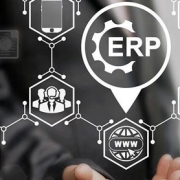As the digital age continues to grow, the shift from legacy systems to online/cloud is becoming prominent. Growing companies, for example, are making the shift in their legacy enterprise resource planning (ERP) systems to address evolving needs and maintain sustainable growth. However, as much as the direction is headed this way, there are still some companies who have yet to make the shirt. SAP expert Oliver Schoenborn shares an article on Forbes explaining the warning signs of a growing business that’s outgrown its Legacy ERP.
Sign #1: Massive data left unused
“Every organization collects large volumes of data every day, internally and externally. But when growing companies move from a legacy ERP to a more intelligent one, they are usually caught off guard when they see how much valuable, much-needed intelligence is left unused. Frustration across the leadership team intensifies when it considers opportunities missed from not tapping that wealth of knowledge.”
Sign #2: Disconnected user experiences
“Connecting employees, suppliers, and customers to relevant resources and data points is critical to meeting everyone’s expectations. Unfortunately, most organizations have spent years developing and adopting different ERP tools, such as custom functionality and spreadsheet-driven analytics. In return, the ERP landscape becomes so overly complex that applications, processes, and data are challenging to maintain and integrate.”
Sign #3: Delayed actions and process bottlenecks
“Every employee wants to think, understand, and move swiftly with data-driven insights and confident decision-making. Most legacy ERP systems are batch-oriented, limiting real-time information availability even if an add-on is designed to augment the system with real-time data.”
Sign #4: Inflexibility to scale operations up or down on demand
“Businesses that respond to the ebbs and flows of operational performance and market demand with balance and ease are well-positioned to lower costs, optimize employee engagement, and yield a high rate of customer satisfaction. When using an ERP that is intelligent enough to keep up with every twist and turn, organizations can scale business needs – such as production capacity, pricing models, and workforce augmentation – with precision.”
Sign #5: Decisions that routinely lead to less-than-optimal outcomes
“Without the effective use of Big Data, companies can get swallowed up by their competition quickly. Without access to a real-time, complete data set, guiding the business is extraordinarily tough. People require a combination of transactional ERP data and data from the applications of other organizations and third parties to feed their analytics tools and derive insights that inspire timely and productive action.”
Schoenborn concludes that having the right technology is what helps move a business forward. Ask yourself if it’s time to move from a legacy ERP system to an Intelligent ERP. The beauty of moving to the latter is, according to Schoenborn, gaining critical capabilities to ignite present-day and future growth.
For Full Article, Click Here



